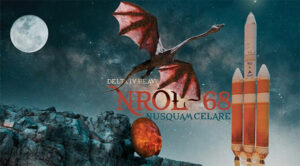Taking a domesticated animal and releasing it into the wild can have dire consequences for that animal. However, most people don’t realize that there is a flip side to that coin. Taking a wild animal and treating it like a pet can be as devastating. Especially in the case of big cats, treating them like exhibits and photo ops is exceptionally cruel.
Oftentimes, this cruelty is enabled by unsuspecting parents. They seize the opportunity to take their children to places where they can witness wild animals. Without an understanding of the negative effects of cub petting, adults do not realize the magnitude of harm that is being done. Their child is happy, the cats seem taken care of, so there is no visible indication of wrongdoing.
Where it all Starts
It all starts with the existence of a demand for the service. Parents take their kids to the zoo and the experience seems harmless enough for the animals. After all, zoo animals, in many cases, have been rescued from dangerous habitats where poachers abound and climate change affects their livelihood. People start to wonder how fun it would be to have a closer interaction with these wild animals.
Dubious entrepreneurs take the opportunity to provide a service to meet this demand. In recent years, facilities that conduct selfie sessions with tiger cubs have appeared. These sessions are referred to as “pay to play.” As the term implies, for a fee, people can take pictures and interact with tiger cubs as if they were house cats.
Many of these businesses are under investigation by animal advocates and authorities. Some of these questionable operations have been caught red-handed committing downright abuse towards cubs. The cubs are punched, thrown, dragged and even electrocuted into submission. The video evidence corroborates this and shows that these business owners view the animals as nothing more than a commodity.
The Effects of ‘Pay for Play’ Petting
The environment that these big cats are placed in is detrimental to their well-being regardless of the presence of physical abuse. Even in a facility where the caretakers do not actively hurt the animals, the mere fact that the cats are used as exhibits has long-term consequences.
In order to make the cubs docile enough to pet, they are taken away from their mothers shortly after birth. This robs them of an important part of their developmental process. Like most mammals, tigers need close interaction with their mother and siblings in order to develop into functioning and capable adult tigers. However, in the case of the petting operations, the cubs are thrown straight into the throes of the paying customers.
As experts attest to and as can be seen in documentaries, big cats have feeding and sleeping habits. In the wild, these habits are instrumental to their growth. The pay to play businesses operate on the schedule of their patrons and not according to the cats’ needs. This results in the development of the cubs becoming disrupted resulting in lifelong ramifications.
Where the Big Cats End Up
Equally as sad as the suffering the cubs face is the fact that their future is often even grimmer. When the cubs grow too big to play with for patrons, the tigers are disposed of in one of several ways. Some cubs are thrown into breeding operations where more animals come out of only to have the cycle continue. Others become attractions at dodgy, substandard zoos and some fall through the cracks, never to be seen again.
It is the responsibility of the public to become informed as to the suffering of these majestic creatures. Change can occur if people stop feeding these irresponsible and cruel businesses.





